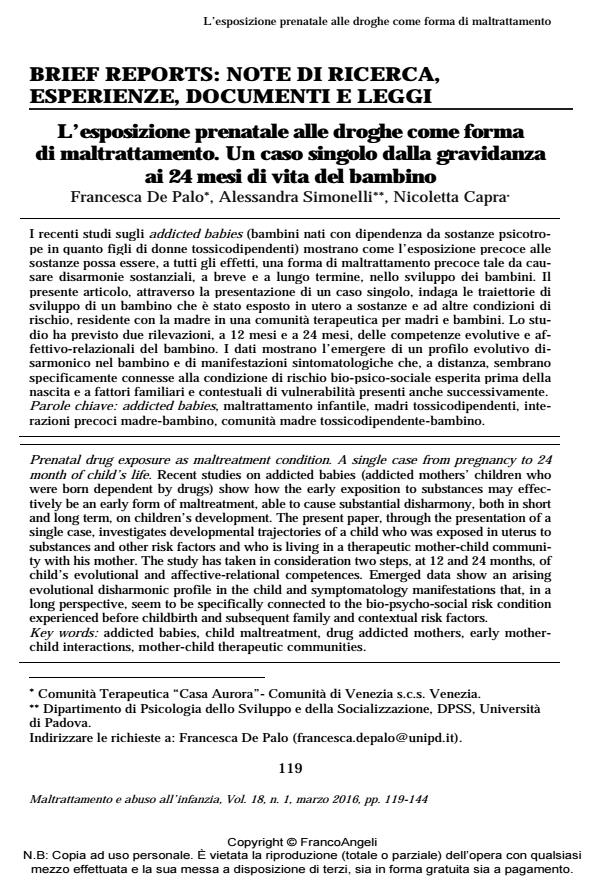Prenatal drug exposure as maltreatment condition. A single case from pregnancy to 24 month of child’s life.
Journal title MALTRATTAMENTO E ABUSO ALL’INFANZIA
Author/s Francesca De Palo, Alessandra Simonelli, Nicoletta Capra
Publishing Year 2016 Issue 2016/1
Language Italian Pages 26 P. 119-144 File size 124 KB
DOI 10.3280/MAL2016-001006
DOI is like a bar code for intellectual property: to have more infomation
click here
Below, you can see the article first page
If you want to buy this article in PDF format, you can do it, following the instructions to buy download credits

FrancoAngeli is member of Publishers International Linking Association, Inc (PILA), a not-for-profit association which run the CrossRef service enabling links to and from online scholarly content.
Recent studies on addicted babies (addicted mothers’ children who were born dependent by drugs) show how the early exposition to substances may effectively be an early form of maltreatment, able to cause substantial disharmony, both in short and long term, on children’s development. The present paper, through the presentation of a single case, investigates developmental trajectories of a child who was exposed in uterus to substances and other risk factors and who is living in a therapeutic mother-child community with his mother. The study has taken in consideration two steps, at 12 and 24 months, of child’s evolutional and affective-relational competences. Emerged data show an arising evolutional disharmonic profile in the child and symptomatology manifestations that, in a long perspective, seem to be specifically connected to the bio-psycho-social risk condition experienced before childbirth and subsequent family and contextual risk factors.
Keywords: Addicted babies, child maltreatment, drug addicted mothers, early motherchild interactions, mother-child therapeutic communities.
Francesca De Palo, Alessandra Simonelli, Nicoletta Capra, L’esposizione prenatale alle droghe come forma di maltrattamento. Un caso singolo dalla gravidanza ai 24 mesi di vita del bambino in "MALTRATTAMENTO E ABUSO ALL’INFANZIA" 1/2016, pp 119-144, DOI: 10.3280/MAL2016-001006